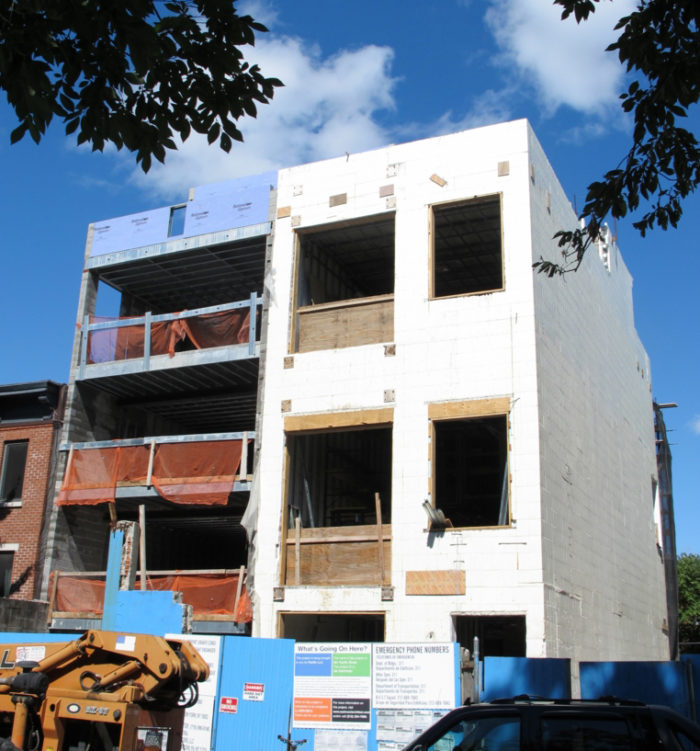
Image Credit: Alex Wilson
Image Credit: Alex Wilson Architect Paul Castrucci (on the left) and builder Ray Sage on the south roof deck of the top apartment of R-951.
Image Credit: Alex Wilson A portion of the middle apartment in R-951 rises two stories.
Image Credit: Alex Wilson The Schüco windows provide tremendous energy performance.
Image Credit: Alex Wilson The large Schüco windows will bring in plenty of light and passive solar heating on the south.
Image Credit: Alex Wilson High-efficiency Zehnder HRVs will ensure good air quality in the apartments.
Image Credit: Alex Wilson Copper refrigerant tubing for the Mitsubishi minisplit condensers extends up to the roof.
Image Credit: Alex Wilson All three condominium units are on multiple levels and include outdoor space.
Image Credit: Castrucci Architects The ground-level apartment has the most outdoor space, including a sizable back yard.
Image Credit: Castrucci Architects A loft mezzanine above the second-floor apartment and a tall ceiling to the south provide a unique three-bedroom unit.
Image Credit: Castrucci Architects I think this would be my choice of apartments, with a penthouse master bedroom and two roof decks.
Image Credit: Castrucci Architects The first connection with builder Ray Sage was through his bees -- on a rooftop in the East Village of New York.
Image Credit: Alex Wilson
I was in New York City over the weekend where I spoke at the Annual Meeting of the Northeast Sustainable Energy Association. That meeting on Saturday night was okay (you can access my presentation from this link if you just have to know what I talked about), but what was really great was an opportunity to explore a new infill housing project in Brooklyn that’s being built to the Passivhaus standard and may well achieve net-zero-energy performance.
Passivhaus is a certification system that originated in Germany and has been picking up steam over the past few years in North America. To achieve certification, buildings must have modeled energy performance that does not exceed a very stringent limit for heating and cooling as well as total annual primary energy consumption below a specified threshold.
Getting a glimpse into New York’s Passivhaus community
It was actually through my daughter that I got to know builder Ray Sage, of Race Age, Inc., and architect Paul Castrucci, of Castrucci Architect. In addition to building high-performance buildings, Ray manages some rooftop beehives in the East Village from which he harvests honey; my daughter was writing an article about raising bees in the City for her CSA (community supported agriculture) newsletter and spent an afternoon with Ray, his wife Wendy Brawer (who runs Green Map, a nonprofit network that produces GreenMaps of cities around the world, highlighting green living resources), and their friend Paul, to learn about beekeeping and help out with honey extraction.
Somehow the topic of green building came up, and it turned out that Ray and Paul were both familiar with my work with Environmental Building News. Ray and Wendy came to my Saturday evening lecture, and I was invited to visit the R-951 Residence, their three-unit Passivhaus condominium project under construction in the Prospect Heights neighborhood of Brooklyn.
Along with working together on honey extraction, Paul, Ray, and Wendy are partners in Further, Inc., a design-build firm specializing in sustainable building and the developer of R-951.
A four-story, three-unit walk-up
R-951 (named for resilience, R-value, and the address: 951 Pacific Street) is being built on a narrow lot in a neighborhood of three- or four-story row houses. The three-unit row house is tall and narrow, but with a remarkable amount of outdoor space. The first-story apartment includes a sizable backyard along with half of the basement space (the rest being common space for the three units). The second-story apartment includes a small front balcony and larger rear balcony plus an upper-level loft bedroom. The upper unit is also on two levels and includes front and rear rooftop terraces along with a small front balcony.
Each unit is about 1,500 square feet. Because the project is designated as a green building by the City, there was a 500 square-foot bonus provided to the developed area. “That is huge,” Paul told me, in that it allowed the addition of the terrace space.
The building is insulated with insulated concrete forms (ICFs) and lots of additional polyisocyanurate foam insulation. The exposed north and south walls are insulated to about R-46, the roof is insulated to R-59, and there is R-21 insulation under the basement slab.
Windows are state-of-the-art triple-glazed, vinyl-framed Schüco units from Germany with NFRC U-factors of 0.15 and remarkable 0.71 visible transmittance. In other words, these windows allow less than half as much heat loss as standard, American double-glazed windows with low-emissivity glass and argon gas fill, yet they are just as clear or even clearer. The solar heat-gain coefficient (SHGC) is 0.50 — allowing plenty of solar gain for passive solar heating benefits.
Preliminary energy modeling using the Passive House Planning Package (PHPP), done by Grayson Jordan in Paul’s office, came out at 4.80 kBtu/ft2·year, which is slightly higher than the Passivhaus threshold (4.75 kBut/ft2·yr), but Paul thinks that with some tweaks to the envelope during construction the project will meet the Passivhaus requirements.
Indoor air quality will be ensured with the highest-efficiency heat-recovery ventilators on the market — those made by the Swiss company Zehnder (the same product we’ve installing in our house). As with our house, the small-diameter round ducts are snaking through R-951 by the dozens.
Net-zero-energy
The building is all-electric. A Mitsubishi minisplit air-source heat pump provides heating and cooling for each apartment. Hot water will be provided with Stiebel Eltron heat-pump water heaters, which I believe are the highest efficiency heat pump water heaters on the market. Induction cooktops and electric ovens will be used in the kitchens. Jordan Goldman of Zero Energy Design consulted on building science and mechanical systems design for the project.
A rooftop photovoltaic (PV) array will provide a total of 12.2 kilowatts (kW) of solar electricity (4.2 kW for one unit and 4.0 kW for each of the other two). These will be net-metered systems that “spin the meter backwards” when the system is producing more electricity than the apartment is using. The PV system is being installed by AEON Solar and will tie into the Con Edison power grid.
The PV system will not include battery back-up, but will use SMA’s new transformerless inverters with access to some power when the utility grid is down and the sun is shining. I wrote about this new inverter last month, and love the resilience benefits it provides.
The PV system will come close to making the project net-zero-energy, but whether it actually gets there will depend on how efficiently the homeowners operate their apartments.
The cost for all these added features to achieve Passivhaus performance is about 5%, according to Ray, though such a small surcharge for the green features in part reflects the high construction cost of multiunit condominiums in Brooklyn.
Ray, Wendy, and Paul anticipate that these features may boost the selling prices slightly compared with standard condos in the neighborhood — one of which is going up next door (with a common wall) and offers a clear comparison.
You can watch the project take shape at R-951.com.
Burgeoning interest in Passivhaus
After our visit to R-951, Ray, Wendy, and I drove through a few neighborhoods of Brooklyn looking at a number of other projects that are currently being built or renovated to achieve Passivhaus certification — and one being built to the Passivhaus standard, but that will not be certified (because the owner wanted a fireplace). And these projects were all within a few blocks on R-951.
I was amazed to learn of so much activity. In fact, Wendy told me that there are over 700 members of the N.Y. Passive House MeetUp Group! That doesn’t mean that all those people are actually building Passivhaus projects, but clearly there is a great deal of interest.
Alex is founder of BuildingGreen, Inc. and executive editor of Environmental Building News. In 2012 he founded the Resilient Design Institute. To keep up with Alex’s latest articles and musings, you can sign up for his Twitter feed.
Weekly Newsletter
Get building science and energy efficiency advice, plus special offers, in your inbox.





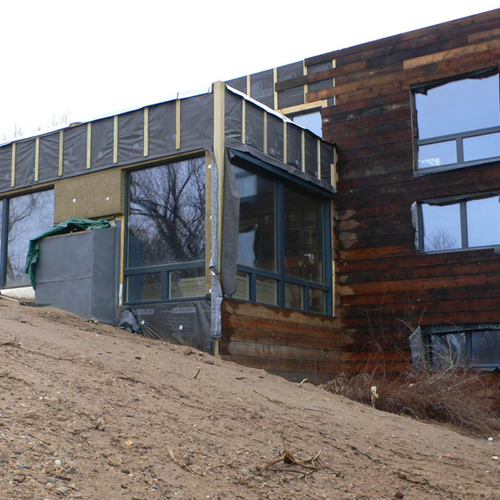
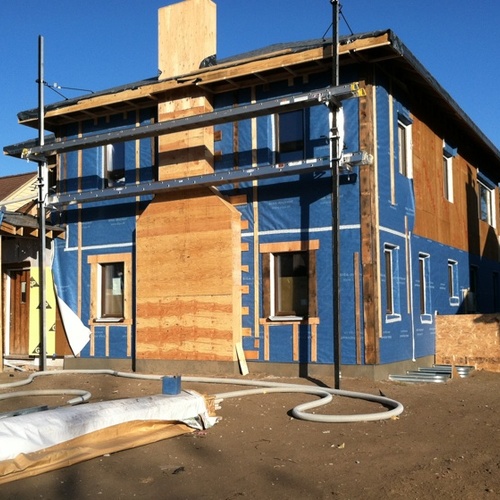
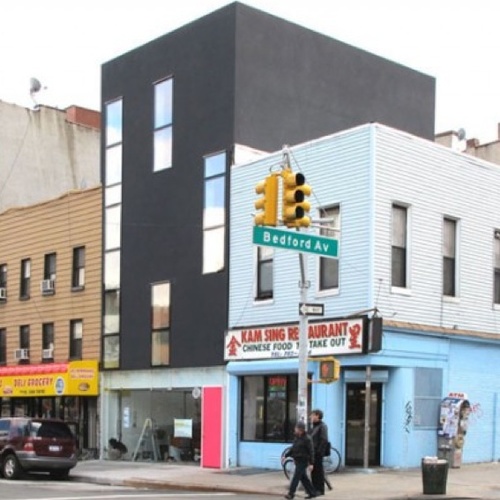
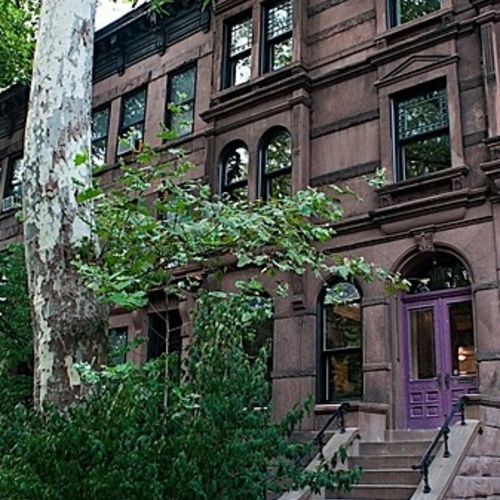






0 Comments
Log in or create an account to post a comment.
Sign up Log in